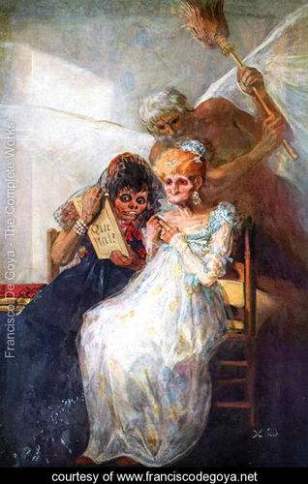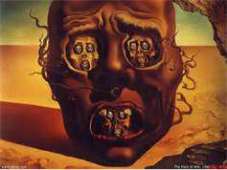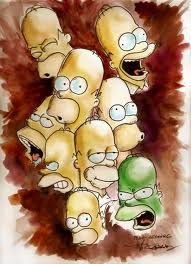We have two options for this blog assignment. We could compare our assigned novel Lucky Jim by Kingsley Amis which is considered a campus novel with an academic film of our choosing or we could find three pictures that represent aspects of the novel. I wonder which option I’m going to choose?
Hmmmmm??
AHHHHH!!! The cinema! Prepare yourselves, folks! As wordy as I tend to have been in my last blogs, we are now on a subject that I adore. I could hold a week long seminar on films. HOLLYWOOD! The Magic Store! La-La Land! The Dream Factory! A long, long time ago…..in a galaxy far, far away….There lived a girl. This girl had a dream. Her dream was to take Hollywood by storm and become one of the most prolific character actresses that ever graced the silver screen. She would surpass Shelley Winters’ three Academy Awards for Best Supporting Actress. She would make it onto AFI’s Top 100 list. This girl (who, for fun, built a database comparing AFI’s Top 100 Lists and the winners of the Academy Awards major awards to cross reference a trend of which films actually endured the test of time to be termed as “classics” versus the “trendy” tendencies of the Academy Awards during any specific year. True story!) dreamed of becoming immortalized on celluloid.
Meanwhile, back in reality, this girl is actually taking a literature class and this is only an assignment. Ok, I need to breathe for a moment and calm down. I have been informed that I have organization trouble with my blogs. So, I will try…really, really try to organize my ADD brain firing on 28 different levels so I can prepare a cohesive blog assignment. Oh look…a squirrel! I will try to limit the length of my discussion to try to stay on topic (I sound like Dr. Bender here, don’t I?) and try not to pull in all of the juicy tidbits and asides about different actors, directors and films to keep this….well….academic. Wish me luck!
I want to address “academic film” first. My understanding of this assignment is that an academic film is one that is set in and the plot is forwarded by collegiate campus life. That’s a little difficult for me to swallow actually. You see, there are SO many great films that deal with academia. Most are on my all-time favorites list. Dead Poet’s Society (I always want to become a teacher after watching this one), To Sir, With Love (Sidney Poitier, I mean come on!), Rudy (one of the best sports films out there), Stand and Deliver, Freedom Writers, The Ron Clark Story and I could go on and on. All of these great films deal with the prejudices, traditions, stereotypes and learning process of academia. Why just limit it to the collegiate level? So, in a mild protest, the film I chose was not on our list. It is set in the collegiate life however. If you have never seen it, I encourage you to do so.
With Honors is a story about a Harvard graduate student Montgomery “Monty” Kessler. Monty has arrived at Harvard through a different path than his three roommates. Monty comes from a single parent home of medium to low income. Monty is smart and works hard to “earn” his place at the esteemed university unlike his three roommates who, through the course of the film, we find out all come from privileged backgrounds. Monty’s entire life is consumed by completing his thesis in Government in the attempts to graduate Suma Cum Laude from Harvard University thus securing the rest of his life.
When his computer hard drive fails deleting his thesis, Monty travels to a copy center to make copies of his one and only manuscript. Monty slips on the snowy streets losing his thesis through a grate into the boiler room of the Harvard Library where a transient, Simon Wilder, happens to have discretely made his home. Monty goes looking for his thesis and finds Simon stoking one of the boilers with the pages of his beloved thesis. Desperate, he makes a deal with Simon. Monty will get “things” for Simon and Simon will “pay” Monty with pages from own his thesis. Over the course of the academic year, Simon teaches Monty about love, life and the difference between the “have’s” and the “have not’s” opening up a whole new perspective for Monty to view the world.
This movie is campy and predictable. It was filmed, after all, in the early 1990’s. The acting is only adequate and there are no awe inspiring images from the cinematography. However, this movie is wonderful. It’s one of those movies that doesn’t require anything from you but to simply watch it. Brendan Fraiser (hubba hubba!) plays the straight man Monty to Joe Pesci’s Simon Wilder. This is an odd coupling that almost works. I also love that Gore Vidal plays Monty’s arrogant, stuffy and demanding Faculty Advisor, Dr. Pitcannon. One of the best scenes in the movie is when Simon, the bum, matches wits with Vidal’s character during a class that Simon is sitting in on battling the experienced realistic self-learner with the pompous, aristocratic, pessimistic and heralded Government professor.
| You know, once again, my ADD is my albatross. When I write one of these blogs, I usually don’t know how it will progress much less how they are going to end (I guess my disorganization reflects that). The fluidity of my writing is better when I just write I have found. For you see, it wasn’t until I sat and pondered the comparison of Lucky Jim to With Honors that I discovered how incredibly alike they are. First and foremost is the idea of a paper that is the catalyst in which Jim Dixon and Monty Kessler hinge the success of their entire careers. Jim needs to become a published scholar to influence his Department Chair, Professor Welch, to extend his contract. Monty must impress his Faculty Advisor, Dr. Pitcannon, with his intellectual and regurgitated graduate thesis turned in on time to receive honors for his degree. The entire length of both plots the characters have tunnel vision in achieving a goal in which both eventually find out that they don’t want. Jim detests teaching and his chosen subject. So why pursue it? He pursues it because it is expected of him. Monty tries so hard to be driven and focused to rise above his born social status eventually realizing that there is more to life than just the recognition of honors. They both become human by the end of their tales rather than being assimilated into the pomposity of academia.
Another similarity is the prejudice of classes. For Lucky Jim, World War II allows for lower class students to enter prestigious universities. The staunch traditional views of the established faculty resent the “lowered standards” having to teach to the masses rather than the assumed elite. In With Honors, Simon Wilder is treated as subhuman because of his transient status not given credit for the mind he has and the love of knowledge that he hungers in him. He has to break through the stereotype to reveal the human being that he is just as Monty has had to break through the circumstances of his circumstances. It takes Monty a while to do that. A poignant phrase uttered by one of Monty’s roommates was said in jest with no malice; however, it is spot on! “Harvard doesn’t have any standards left! They’ll let in anyone who is bright!”. Satirically, this shows the mindset of old-fashioned views about academia. Finally, Jim Dixon sheds his shackle by giving his speech that Mr. Welch has baited him into giving. Granted, it was alcohol induced. However, he rages against everything that he has had to endure to try to keep a job that he loathes. He refused to fall in line and points out the fallacies of the institution. It is not until he is true to himself that his “luck” ultimately changes. Jim is rid of Margaret. He is rid of the Welches and he, surprisingly, get the girl in Christine. For Monty, it is not until he decides to trash his beloved original thesis that spouted everything he assumed was expected by his advisor and write something that he believed in that he found release. Learning about Simon and from Simon showed Monty the world in all of its beauty and all of its despair. Monty learned about life and learned that it is a nobler thing to achieve honor within yourself than what is printed on your diploma. I thoroughly enjoyed reading Lucky Jim which for me to say is something. The writing was witty and the characters sublimely flawed. I have often felt like many of Jim’s faces; however, my traditional Southern upbringing has prevented me from displaying. It was a very easy read for me and probably one of the very few times in my life that I literally couldn’t put a book down (or in this case my phone). |


















Recent Comments